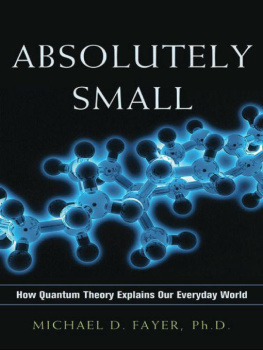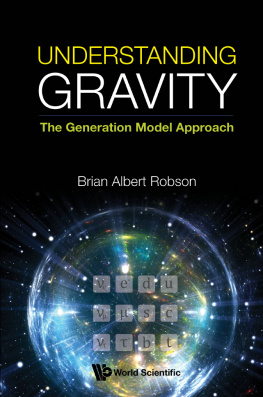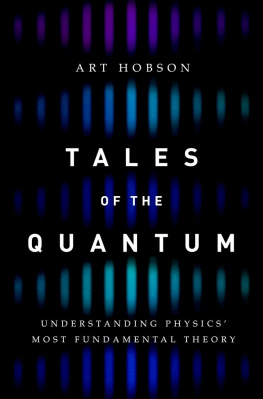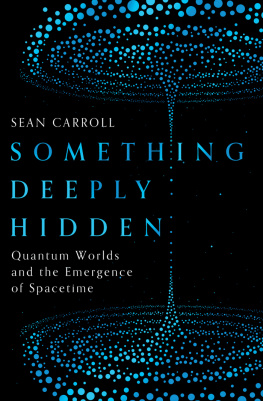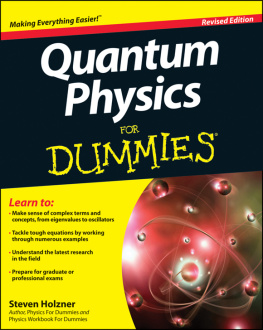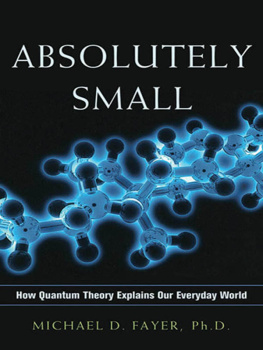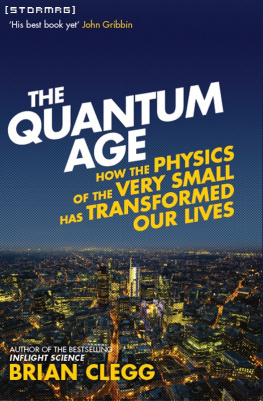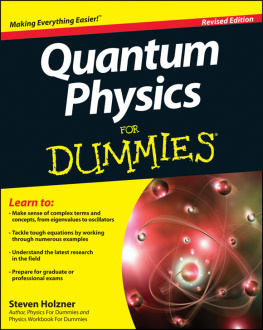Table of Contents
Bulk discounts available. For details visit:
www.amacombooks.org/go/specialsales
Or contact special sales:
Phone: 800-250-5308
E-mail: specialsls @ amanet.org
View all the AMACOM titles at: www.amacombooks.org
This publication is designed to provide accurate and authoritative information in regard to the subject matter covered. It is sold with the understanding that the publisher is not engaged in rendering legal, accounting, or other professional service. If legal advice or other expert assistance is required, the services of a competent professional person should be sought.
Library of Congress Cataloging-in-Publication Data
Fayer, Michael D.
Absolutely small : how quantum theory explains our everyday world / Michael D. Fayer.
p. cm.
Includes bibliographical references and index.
ISBN-13: 978-0-8144-1488-0
ISBN-10: 978-0-814-41491-0
1. Quantum theoryPopular works. 2. Quantum chemistryPopular works. I. Title.
QC174.12.F379 2010
530.12dc22
2009044707
2010 Michael D. Fayer.
All rights reserved.
Printed in the United States of America.
This publication may not be reproduced, stored in a retrieval system, or transmitted in whole or in part, in any form or by any means, electronic, mechanical, photocopying, recording, or otherwise, without the prior written permission of AMACOM, a division of American Management Association, 1601 Broadway, New York, NY 10019.
About AMA
American Management Association (www.amanet.org) is a world leader in talent development, advancing the skills of individuals to drive business success. Our mission is to support the goals of individuals and organizations through a complete range of products and services, including classroom and virtual seminars, webcasts, webinars, podcasts, conferences, corporate and government solutions, business books, and research. AMAs approach to improving performance combines experiential learninglearning through doingwith opportunities for ongoing professional growth at every step of ones career journey.
Printing number
10 9 8 7 6 5 4 3 2 1
Preface
IF YOU ARE READING THIS, you probably fall into one of two broad categories of people. You may be one of my colleagues who is steeped in the mysteries of quantum theory and wants to see how someone writes a serious book on quantum theory with no math. Or, you may be one of the vast majority of people who look at the world around them without a clear view of why many things in everyday life are the way they are. These many things are not insignificant aspects of our environment that might be overlooked. Rather, they are important features of the world that are never explicated because they are seemingly beyond comprehension. What gives materials color, why does copper wire conduct electricity but glass doesnt, what is a trans fat anyway, and why is carbon dioxide a greenhouse gas while oxygen and nitrogen arent? This lack of a picture of how things work arises from a seemingly insurmountable barrier to understanding. Usually that barrier is mathematics. To answer the questions posed aboveand many morerequires an understanding of quantum theory, but it actually doesnt require mathematics.
This book will develop your quantum mechanics intuition, which will fundamentally change the way you view the world. You have an intuition for mechanics, but the mechanics you know is what we refer to as classical mechanics. When someone hits a long drive baseball, you know it goes up for a while, then the path turns over and the ball falls back to Earth. You know if the ball is hit harder, it takes off faster and will go farther before it hits the ground. Why does the ball behave this way? Because gravity is pulling it back to Earth. When you see the moon, you know it is orbiting the Earth. Why? Because gravity attracts the moon to the Earth. You dont sit down and start solving Newtons equations to calculate what is going on. You know from everyday experience that apples fall down not up and that if your car is going faster it will take longer to stop. However, you dont know from everyday experience why cherries are red and blueberries are blue. Color is intrinsically dependent on the quantum mechanical description of molecules. Everyday experience does not prepare you to understand the nature of things around you that depend on quantum phenomena. As mentioned here and detailed in the book, understanding features of everyday life, such as color or electricity, requires a quantum theory view of nature
Why no math? Imagine if this book contained discussions of a topic that started in English, jumped into Latin, then turned back to English. Then imagine that this jumping happened every time the details of an explanation were introduced. The language jumping is what occurs in books on quantum theory, except that instead of jumping from English to Latin, it jumps from English to math. In a hard core quantum mechanics book (for example, my own text, Elements of Quantum Mechanics [Oxford University Press, 2001]), you will find things like, the interactions are described by the following set of coupled differential equations. After the equations, the text reads, the solutions are, and more equations appear. In contrast, the presentation in this book is descriptive. Diagrams replace the many equations, with the exception of some small algebraic equationsand these simple equations are explained in detail. Even without the usual overflow of math, the fundamental philosophical and conceptual basis for and applications of quantum theory are thoroughly developed. Therefore, anyone can come away with an understanding of quantum theory and a deeper understanding of the world around us. If you know a good deal of math, this book is still appropriate. You will acquire the conceptual understanding necessary to move on to a mathematical presentation of quantum theory. If you are willing to do some mental gymnastics, but no math, this book will provide you with the fundamentals of quantum theory, with applications to atomic and molecular matter.
Schrdingers Cat
WHY ARE CHERRIES RED and blueberries blue? What is the meaning of size? These two questions seem to be totally unrelated. But, in fact, the second question doesnt seem to be a question at all. Dont we all know the meaning of size? Some things are big, and some things are small. But, the development of quantum theory showed that the first two questions are intimately related and that we had a completely false concept of size until a couple of decades into the twentieth century. Our ideas about size, if we thought about size at all, worked just fine in our everyday lives. But beginning in approximately 1900, the physics that was used to describe all of nature, and the physics that still works remarkably well for landing a spacecraft on Mars, began to fall apart. In the end, a fundamentally new understanding of size was required not only to explain why cherries are red and blueberries are blue, but also to understand the molecules that make up our bodies, the microelectronics that run our computers, why carbon dioxide is a greenhouse gas, and how electricity can move through metals. Our everyday experiences teach us to think in terms of classical physics, the physics that was greatly advanced and formalized by Sir Isaac Newton (1642-1727). Everything we know from early childhood prepares us to view nature in a manner that is fundamentally wrong. This book is about the concept of absolute size and its consequence, quantum theory, which requires us to fundamentally change our way of thinking about nature. The first half of the book describes the basic concepts of quantum theory. The second half applies quantum theory to many aspects of the world around us through an examination of the properties of atoms and molecules and their roles in everyday life.

